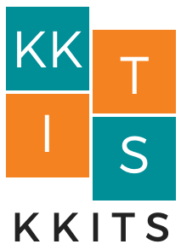Expensify is a software solution designed to help businesses track, organize, and categorize receipts and expenses. You can sync it with your bank account to import expenses automatically or simply take a photo of a receipt to import it into your account. You can use this method of revenue recognition even if you’ve received payments during the contract period. To ensure you aren’t surprised by a customer withholding part of the fee you’re owed, make sure you account for contract retainage properly when budgeting construction bookkeeping for a project and invoicing clients. You could have one account reserved for paying expenses, another one for managing payroll, and a third one for receiving payments for clients. The high price and length of construction projects make payment scheduling and collection unique.
A Complete Guide on MS Dynamics Accounting for Businesses
Regularly reconcile your bank and credit card statements with your financial records to catch errors early and maintain accuracy. Another key benefit of cloud-based solutions is that they provide seamless mobile access for on-site teams. This enables them to access project information and communicate with other team members from anywhere. This can improve collaboration and ensure everyone is on the same page, regardless of location. According to the Construction Financial Management Association, pre-tax net profits for contractors and subcontractors are typically between 1.4% and 3.5%.
Tip 2: Use job costing to manage project costs and general business ledgers
Properly accounting for retainage is essential for accurate financial reporting and effective cash flow management. As the construction industry operates on a project-by-project basis, it is important for contractors to have a clear understanding of their cash flow. By keeping track of their expenses and income, contractors can predict future cash flow and plan accordingly.
All You Need to Know About Construction Bookkeeping
The percentage of completion method is a type of accrual accounting, but it recognizes revenues, expenses, and profit based on how much work is already finished on a project. This accounting method is particularly useful for large construction businesses and companies with long-term contracts. Construction management software is essential for managing complex construction projects. The Percentage of Completion Method recognizes revenue and expenses in proportion to the work completed during a reporting period. Accrual basis accounting matches income and costs with the periods in which they are earned or incurred, regardless of when cash is transferred.
Tips for bookkeeping for construction companies
- By tracking expenses and income, contractors can estimate future cash flow and plan accordingly.
- These methods track revenue and expenses over time and assign costs to specific projects, ensuring accurate financial management and project profitability.
- One of the easiest mistakes for new contractors is to focus solely on revenue rather than profit.
- This method is closely tied to the project’s timeline and milestones, providing a steady cash flow throughout the project’s duration.
These experts possess in-depth knowledge and expertise in handling complex financial responsibilities such as job costing, payroll taxes, and reporting. Accurate financial reporting is essential in construction as it impacts decision-making, funding opportunities, and compliance with regulatory requirements. It ensures transparency for stakeholders and helps maintain trust in the company’s financial practices. Accountants play a vital role in monitoring project budgets and timelines, ensuring that financial resources are allocated efficiently. By implementing robust financial controls and regular reporting, they can provide insights into spending patterns and highlight areas where costs may be escalating.
Construction payroll
- These statements help stakeholders, including investors and management, make informed decisions regarding project financing and resource allocation.
- By tracking cash flows directly, businesses can maintain a clear picture of their liquidity and immediate financial health.
- This method is particularly beneficial for projects that extend over multiple accounting periods, as it provides a more accurate reflection of a company’s financial performance and project status.
- There are other aspects of construction accounting that make it unique from general accounting, as well.
- Budgets should be detailed and include all anticipated costs such as labor, materials, equipment, and subcontractor fees.
Common accounting challenges include managing project delays, tracking subcontractor expenses, and controlling overhead costs. Lastly, the cash flow statement tracks the inflows and outflows of cash, highlighting how well the company generates cash to fund its operations and meet its obligations. In the construction industry, where cash flow can be irregular due to project timelines and payment schedules, this statement is critical for ensuring liquidity. By analyzing cash flow, construction companies can better plan for future projects and manage their financial resources effectively. Efficient payroll processing is crucial in the construction industry, where project timelines and labor costs can significantly impact profitability. Utilizing specialized payroll software can streamline the management of employee hours, wages, and deductions, ensuring compliance with industry regulations.
If you https://digitaledge.org/the-role-of-construction-bookkeeping-in-improving-business-efficiency/ are handling all the bookkeeping yourself or using an in-house team, then not knowing the nuts and bolts of construction-specific bookkeeping could land you in a financial mess. Retainage, or retention, is a percentage of the total contract value withheld by the client to ensure project completion. Accurately account for retainage amounts in your financial reports, as this impacts both your cash flow and overall project profitability.
Each section of the balance sheet — assets, liabilities, and equity — provides a different view into the company’s finances. However, all three sections are related, as total assets are equivalent to the sum of liabilities and equity. Instead, retainage is tracked in separate accounts on the general ledger, typically called retention receivable and retention payable. Once the retained funds are due to be released, the amounts are transferred to accounts receivable or payable.
